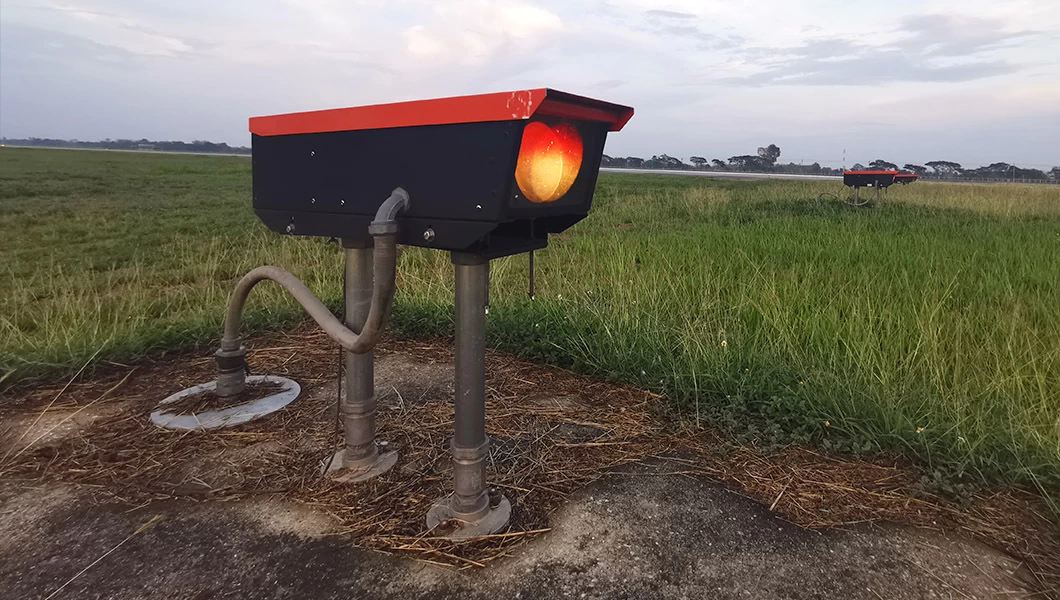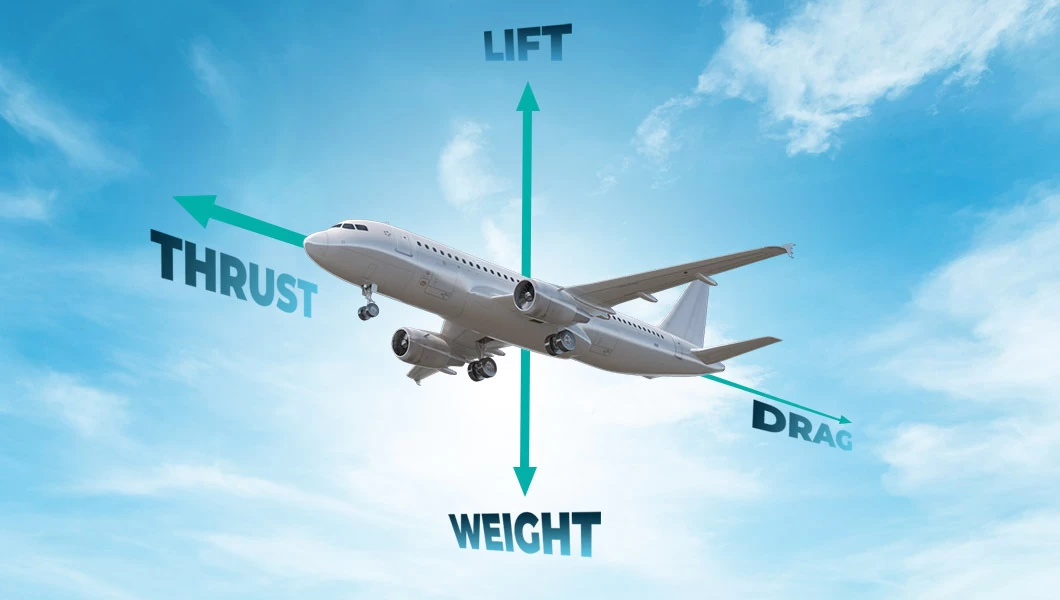Prefer to listen? Press play to hear this article.
Welcome to the world of NOTAMs. But beneath the intimidating format is essential intel that keeps flights safe and legal—and understanding them is crucial. Let’s break down the mystery behind NOTAM.
What’s a NOTAM?
Before we move any further, let’s make sure that we’re on the same page on what a NOTAM is. Notice to Airmen, or NOTAM (and not a “no tam”), is a time-sensitive advisory that alerts pilots and other aviation professionals, like dispatchers and air traffic controllers, to temporary changes or potential hazards along a flight route or at an airport. Notices can include anything from a closed runway to military exercises or activity, or even an airshow that affects an airspace.
In short? It’s essentially a pilot’s real-time “heads-up” system. They’re a crucial piece of every pre-flight briefing. While flight planning tools give you the big picture, NOTAMs zoom in on what’s happening right now—be it a lightning failure at a major runway or a flock of skydivers dropping near your route. Ignoring one might not just be inconvenient; it could be illegal or altogether dangerous.
Differences Between NOTAMs Worldwide
NOTAMs are issued by an aviation authority, such as the EASA and national regulators in Europe, or the FAA in the United States. A key moment to notice here is that the way these notices are formatted and structured differs. Most countries follow the ICAO NOTAM format—highly structured, coded, and designed for international standardization. ICAO format includes fields like the NOTAM number, location, effective times, and a qualifier line for automated filtering.
The United States, on the other hand, currently uses a domestic format for internal notices and differs in numbering, abbreviations, and structure. U.S. domestic NOTAMs, for example, don’t use ICAO codes and have unique types that we’ll introduce a bit later.
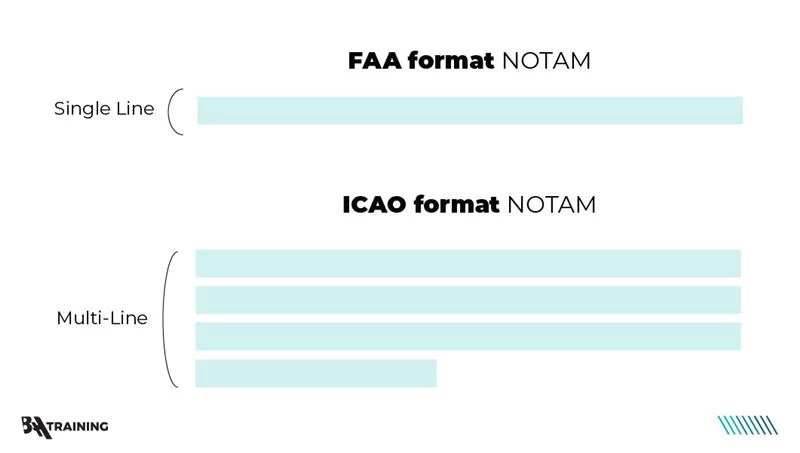
Up until 2019, Canada was also using domestic NOTAMs with their own formatting, but has transitioned to ICAO ones, and as of 2025, the U.S. is in the process of leaving their old formatting behind and jumping into the same aircraft as the rest of the globe. While the FAA still uses the domestic formatting, some ICAO-formatted NOTAMs are also being published for familiarization and international use.
Types of NOTAMs
NOTAMs come in several flavors, each serving a different purpose depending on the nature of the information being communicated and how they’re issued. Here’s a breakdown of the main categories pilots may encounter—because not all NOTAMs are created equal (but all-caps? Always).
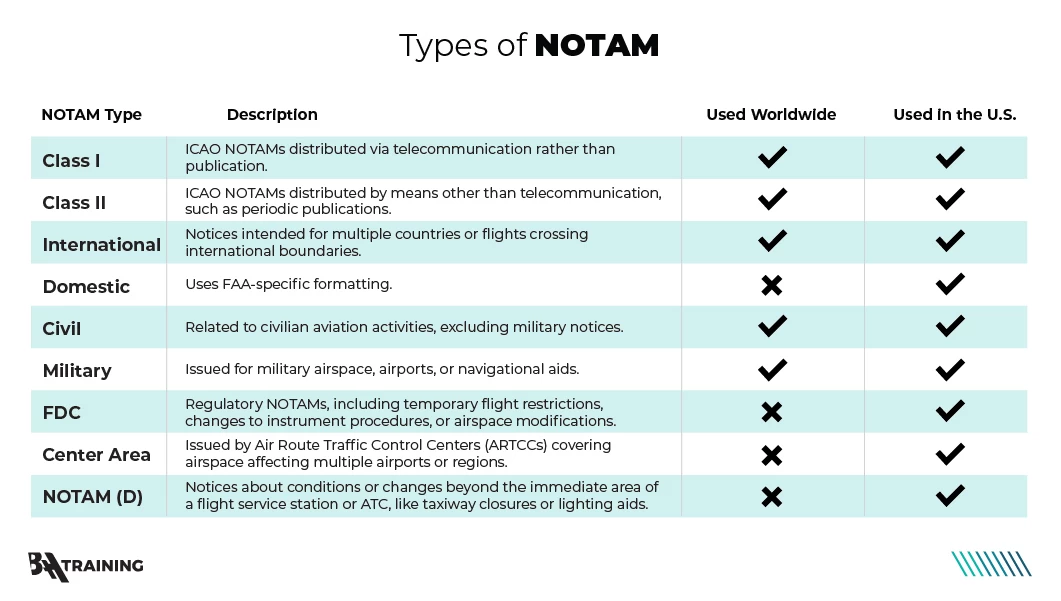
Distribution Types:
- Class I NOTAMs are sent directly via telecommunication systems—think of them as real-time alerts.
- Class II NOTAMs are distributed less urgently, often through periodic bulletins or printed documents.Now, what type of notices to airmen would be printed in documents or published in a bulletin? This could be information about a scheduled runway maintenance, temporary changes to airport services, like fuel availability or baggage handling, or other conditions that impact flight operations but don’t require immediate action.
Operational Categories:
- International NOTAMs are used for flights crossing borders; these adhere to ICAO standards and are relevant for multiple countries. They’re a must-read for international ops.
- Domestic ones are primarily a U.S.-specific category that follows the FAA formatting. They’re used internally and often differ in style and structure from ICAO-standard NOTAMs.
- Civil NOTAMs cover all non-military aviation activities. Since civil NOTAMs include all notices that aren’t military operations, this is the most common type of notice that pilots encounter worldwide, especially in the U.S.
The FAA’s NOTAM system handles tens of thousands of active NOTAMs daily, and most of them are civil—notices about basic airport and airspace conditions that affect civilian flight planning.
- Military NOTAMs are essential for operations in restricted or military-controlled airspace and are used globally.
- FDC NOTAMs (Flight Data Center) are regulatory and often concern temporary flight restrictions (TFRs), chart amendments, or procedure changes. They’re only used in the U.S., but they’re critical for legal compliance.
- Center Area NOTAMs cover wide regional areas, often affecting multiple airports or airspace zones. Again, this is a U.S.-only category, and notices are issued by Air Route Traffic Control Centers (ARTCCs).
- NOTAM (D) includes information beyond the immediate vicinity of an airfield, like airspace activity, navigational aid outages, or taxiway closures. Another U.S.-exclusive format, and one of the most common NOTAM types for domestic flights.
How to (Properly) Read NOTAM Data?
To be completely honest, reading information on a NOTAM is no walk in the park, but once you familiarize yourself with the system and the abbreviations, cracking the notices becomes much easier.
So, let’s take a real-life NOTAM example and break it down.
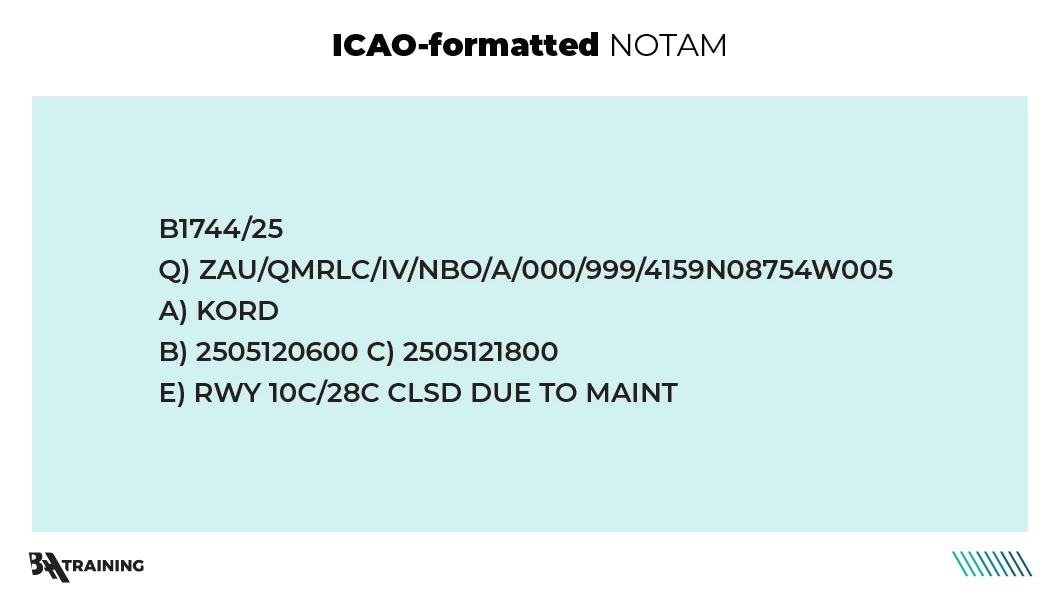
B1744/25
This is the NOTAM series and number. It’s the series B, the 1744th notice issued in the series, and the year 2025.
Q) ZAU/QMRLC/IV/NBO/A/000/999/4159N08754W005
This is the Q-Line (Qualifier Line), also known as the ICAO NOTAM code block. It’s a five-letter coded group, always starting with a Q, followed by qualifiers for: traffic, purpose, scope, altitude, and location.
Similar ARTICLES
Let’s take a look at the information in Q block:
- ZAU – Flight Information Region (FIR) affected is Chicago ARTCC (ZAU).
- QMRLC – NOTAM code indicating a Runway Closure (QMR) and its scope and purpose.
- IV/NBO – Traffic: IFR + VFR / Purpose: Normal, Both (pilots + operations), Operational.
- A – Scope = Aerodrome-related.
- 000/999 – Altitude limits: from the ground (0 ft) to unlimited (999 FL)
- 4159N08754W005 – Center coordinates (Chicago O’Hare) and a radius of 5 nautical miles.
A) KORD
This is the ICAO code for the affected aerodrome: Chicago O’Hare International Airport.
B) 2505120600 C) 2505121800
Start of validity: 12 May, 2025 at 06:00 UTC, and end of validity: 12 May, 2025 at 18:00 UTC.
E) RWY 10C/28C CLSD DUE TO MAINT
Runway (RWY) 10C/28C is closed (CLSD) due to maintenance (MAINT).
Your PILOT CAREER
starts with a first click
Now, let’s put all of this information into a single, coherent notice, and we get: Runway 10C/28C at Chicago O’Hare International Airport (KORD) will be closed due to maintenance from 06:00 UTC to 18:00 UTC on May 12, 2025. This affects all air traffic within 5 nautical miles and all altitudes.
What about the FAA-formatted NOTAM of the same event?
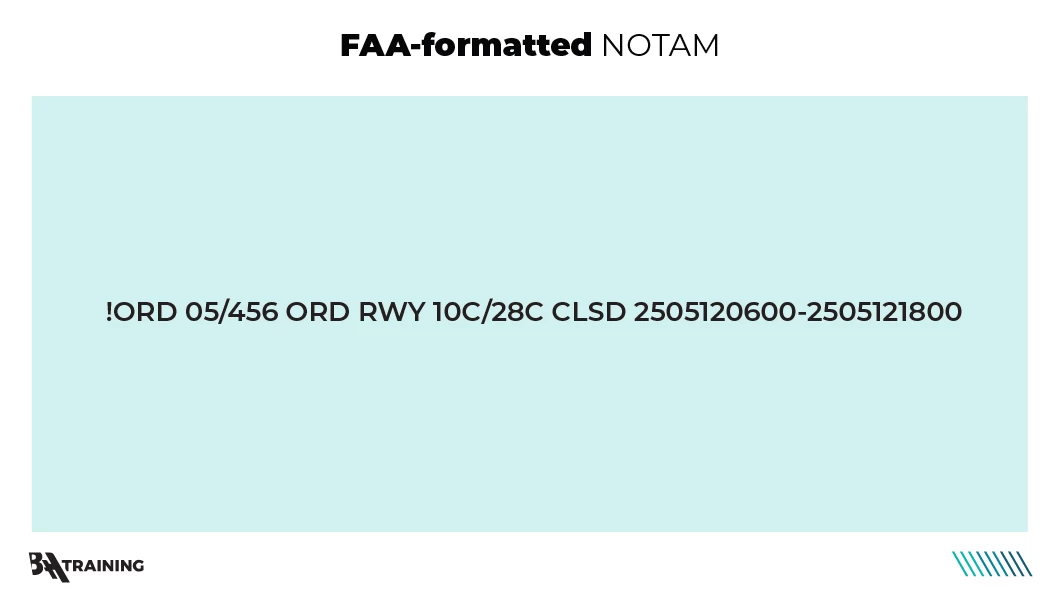
!ORD – FAA code for Chicago O’Hare International Airport.
05/456 – It’s the 456th NOTAM issued in the month of May.
ORD RWY 10C/28C CLSD – Repeats the affected O’Hare Int’l Airport and specifies the runway closed.
2505120600-2505121800 – Runway closure is active from 0600 to 1800 UTC on May 12, 2025.
What Happens When NOTAMs Are Down?
One of the most famous cases of a mass NOTAM outage happened only a few years back. In January 2023, the U.S. aviation system experienced a nationwide ground stop caused by the failure of a one system—NOTAMs.
The FAA’s then-called Notice to Air Missions system crashed overnight, leaving pilots without access to essential safety alerts for almost 12 hours straight. As a result, all domestic departures in the United States were paused for hours, affecting more than 11,000 flights through delays or cancellations. It was the first nationwide ground stop since 9/11.

According to the FAA, the outage stemmed from corrupted database files during routine maintenance. An internal contractor unintentionally deleted files while syncing a backup system, which caused the live NOTAM feed to fail. Worse still, the backup system did not kick in properly, revealing serious infrastructure weaknesses in one of aviation’s most critical data systems.
This incident showed the world just how central NOTAMs are to flight safety and compliance—even though many people outside the aviation community had never heard the acronym before. Without current NOTAMs, pilots can’t legally or safely fly, especially under IFR. It also triggered a deeper review of the FAA’s aging tech infrastructure, pushing forward modernization plans that had been slow to roll out.
Training for NOTAMs

Pilots get full training on interpreting and using NOTAMs during their initial pilot (Ab Initio) training stage. Both private pilot and commercial pilot license students are introduced to basic flight planning, regulations, and safety procedures during the ground school part. It includes learning about what NOTAMs are, how and where to access them, how to read their formats, and their importance in pre-flight planning. This is critical knowledge to cover before students start their solo flights or flying cross-country.
Bottom Line
There is no denying it—NOTAMs are critical for maintaining aviation safety and operational readiness, since they provide timely, accurate, and relevant information about changes or hazards in the airspace, airports, or navigation systems. Pilots rely heavily on NOTAMs to make informed decisions, avoid dangers, and comply with regulations. Want to learn more about other types of essential reports pilots learn to decode? Check out our post about understanding METARs, TAFs, and PIREP!

